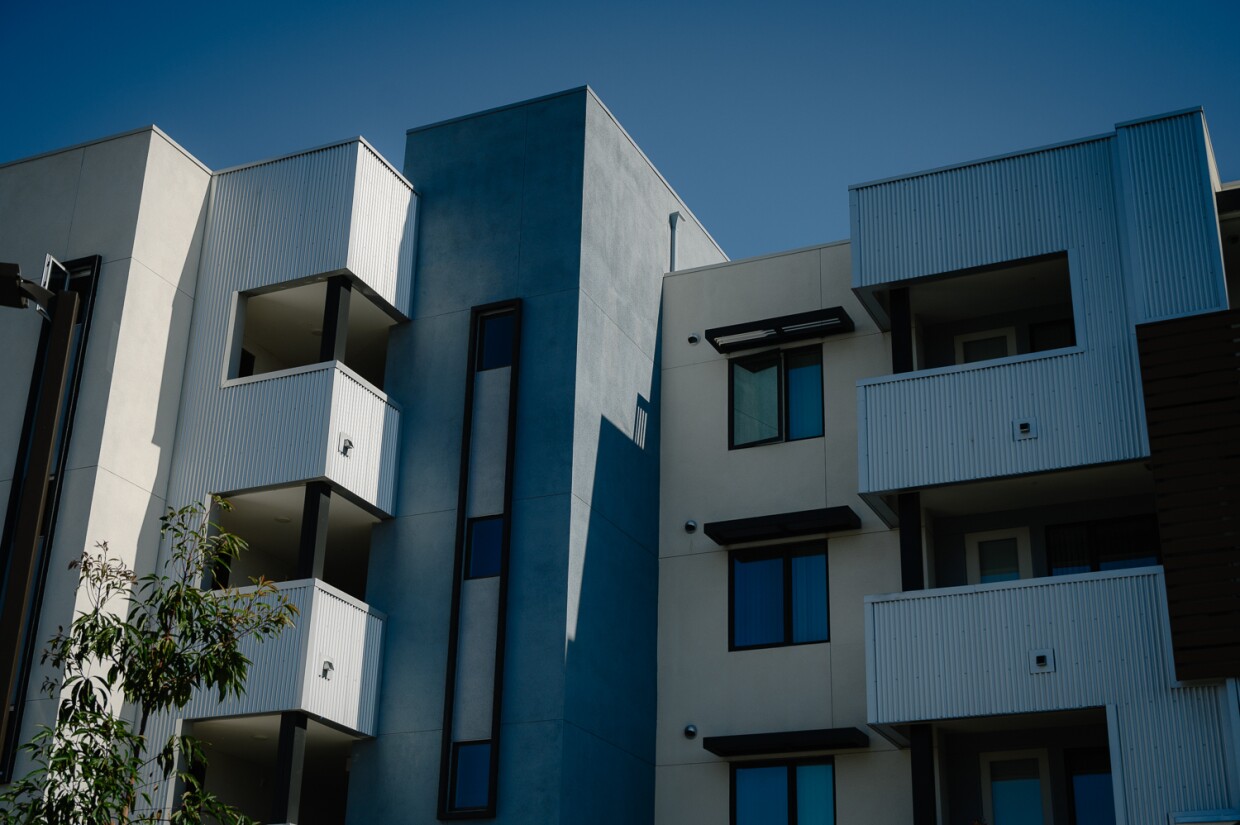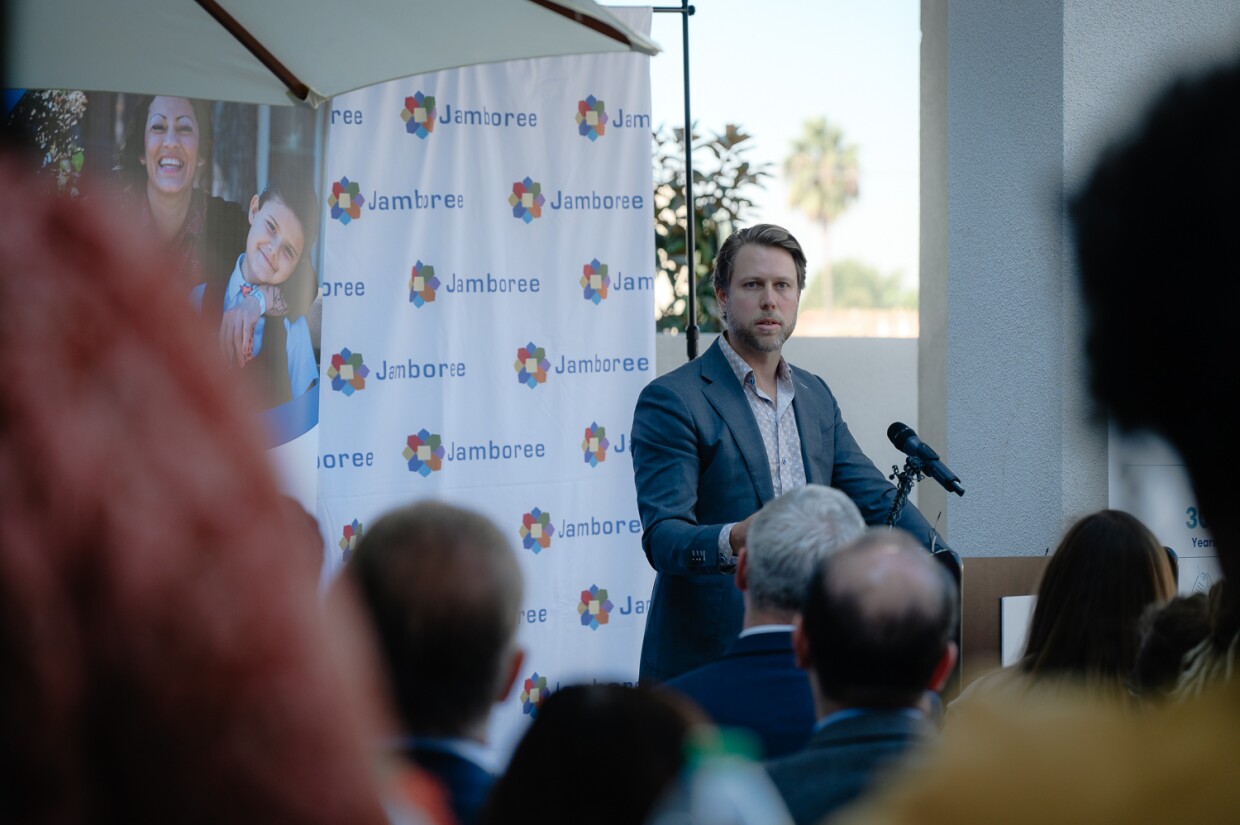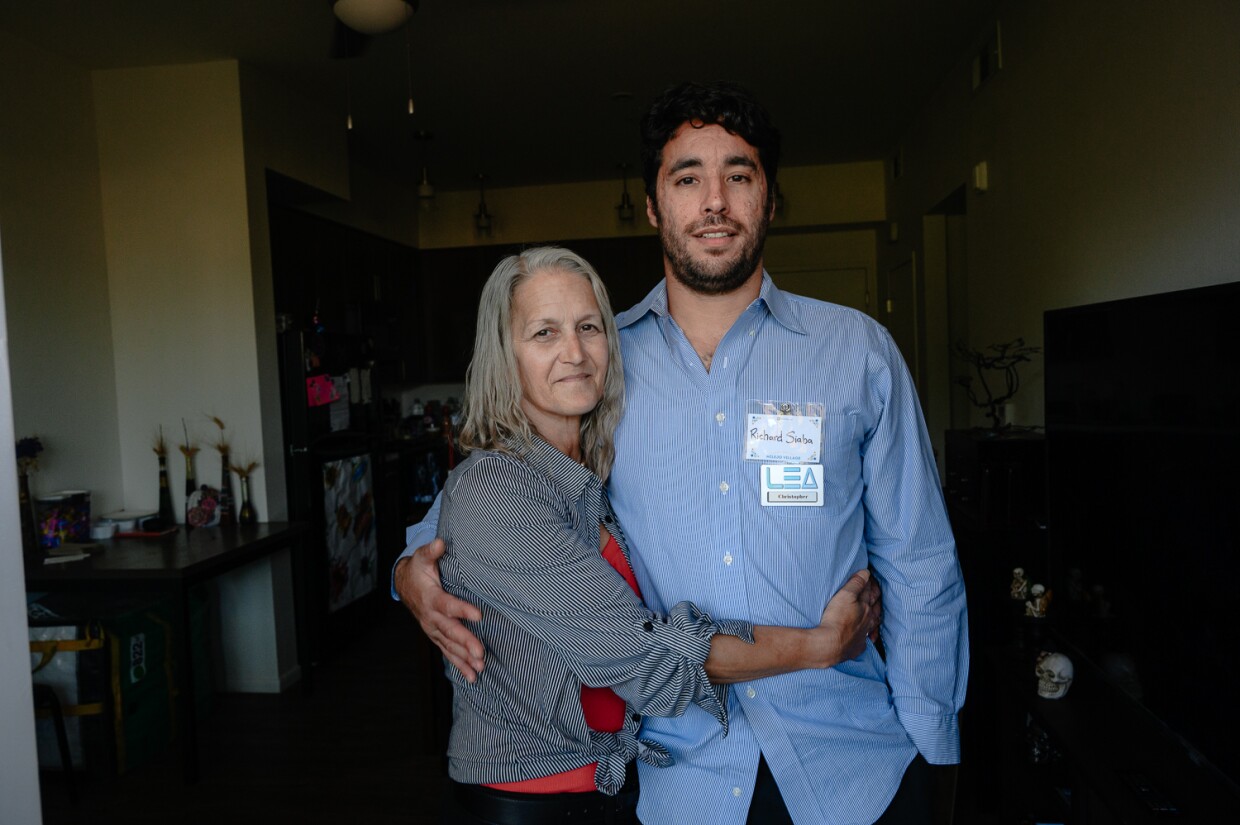A new apartment complex in San Ysidro aims to help dozens of unhoused residents leave homelessness behind for good.
The Milejo Village community, run by nonprofit developer Jamboree Housing, has 64 units of permanent supportive housing. This type of housing combines deeply affordable rents with mental health support, job training and other services meant to prevent people from falling back into homelessness.
As the rate of people falling into homelessness continues to outpace the rate of people finding stable housing across San Diego County, advocates and officials hope the new homes will help slow the crisis.

Rachel Hayes, one of the first residents to get a place at Milejo Village, said many people don’t realize how hard it is to go from living in a tent to having stable housing again.
Even after Hayes, 56, signed her lease and received the keys to her new apartment in June, she said it was hard to stay there.
“I wasn't used to being, for one, alone,” Hayes said. “I was up every two hours checking my locks.”
For weeks, Hayes would return to the comfort of the tent where she had been living in downtown San Diego. It was a month later that she finally decided it was time to make the move for good.
Conversations around homelessness often focus on the process of finding permanent housing. But the months and years afterwards are also a critical time. Even after moving off the street, many people can struggle to navigate things like living with neighbors again and figuring out how to pay rent — and may lose that housing again.
In 2020, the San Diego Regional Task Force on Homelessness counted more than 5,000 unhoused residents who had moved into permanent housing. But by 2022, a quarter of them had returned to homelessness.
Many advocates and lawmakers see permanent supportive housing as one of the best solutions. In a recent study in Santa Clara County, permanent supportive housing was able to keep 86% of all residents housed for several years, including many people dealing with serious mental illnesses and substance abuse disorders.
“We are on a treadmill right now that is speeding up,” said San Diego Housing Commission Vice Chair Ryan Clumpner. “That is why developments like this are so important.”

There is a particular shortage of permanent supportive housing in the South Bay. County data show just nearly 6,500 units across the county, but just 31 units in the southern region, although San Ysidro is excluded.
The city of Chula Vista is moving forward with a plan to add an additional 31 units by purchasing and renovating an aging motel.
Residents were paired with Milejo Village through San Diego’s coordinated entry system, a regional network that works to match people experiencing homelessness with shelter and other services. All of the 64 apartments are currently occupied, according to a Jamboree Housing spokesperson.
The company said all Milejo Village residents had moved from various other living situations in the city of San Diego, including the Seniors Landing bridge shelter, their personal vehicles and encampments in downtown.
For Hayes, her place is finally starting to feel like a home. That empty apartment has filled with furniture and Día de Muertos decorations and paintings from her art-based trauma group at the church where she volunteers.

Hayes is also an outspoken advocate on homelessness. She said the newfound stability has given her more time and energy to support her housed and unhoused neighbors.
“Housing first works,” she said. “It's not a homeless crisis, it's a housing crisis. And without the housing, there will be more and more people becoming homeless.”
More information on how to get help from San Diego County’s coordinated entry system can be found on their website. Anyone needing assistance can call the 2-1-1 hotline to speak with an outreach team.





